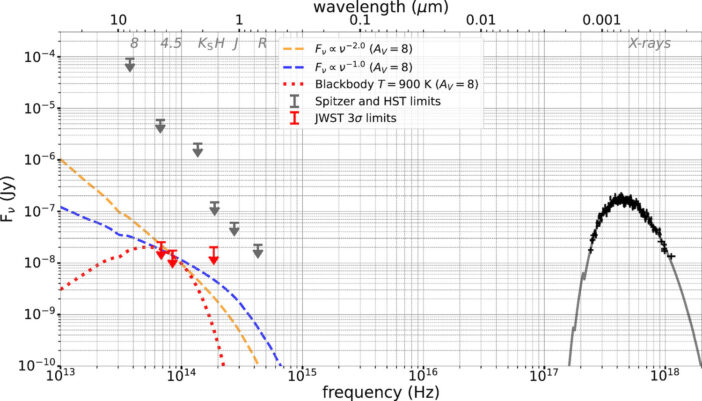Editor’s Note: Astrobites is a graduate-student-run organization that digests astrophysical literature for undergraduate students. As part of the partnership between the AAS and astrobites, we occasionally repost astrobites content here at AAS Nova. We hope you enjoy this post from astrobites; the original can be viewed at astrobites.org.
Title: A JWST Survey of the Supernova Remnant Cassiopeia A
Authors: Dan Milisavljevic et al.
First Author’s Institution: Purdue University
Status: Published in ApJL
Cassiopeia A, or Cas A for short, is in many ways the golden child of supernova remnant astronomy, a field that studies the hot clouds of gas and dust produced by the explosive deaths of stars. Beautiful and with a wealth of insights on stellar death to be gleaned from its billowy filaments, Cas A has mesmerised astronomers since its nascent glow first lit up the night sky in the late 17th century.
The hype behind Cas A has been sustained by the launch of new facilities, which provide increasingly detailed views of the dusty, gaseous nebula that was left behind by the cataclysmic explosion of a star 15–20 times the mass of the Sun. Luckily for the die-hard Cas A fans, JWST has obtained incredibly detailed images of the remnant’s near- and mid-infrared emission in the ~1.5 to ~26.7 microns (1 micron = 10-6 meter) range using a variety of filters referred to by their JWST filter name (e.g., F120W). These images are the focus of today’s article that studies Cas A’s structure and searches for evidence of its central neutron star.

Figure 1: NIRCam (top) and MIRI (bottom) images of Cas A collected using JWST. The filters used to construct each image are listed in the top right corner. [Milisavljevic et al. 2024]
Not only did the authors consider Cas A’s structure in their article, they also searched for evidence of a central compact object such as a neutron star within its nebula. When massive stars die, they are expected to produce a compact object, be it either a black hole or neutron star. Therefore, astronomers are often eager to find evidence of these exotic objects in supernova remnant images. Previously, X-ray images from Chandra had revealed a point source at the centre of Cas A that was presumed to be its neutron star. Unfortunately, more recent visible and near-infrared Hubble and Spitzer images of Cas A did not show evidence of the reported central compact object. However, this result was not entirely unexpected given the expected low magnetic field strength of the neutron star or the high extinction (or dimming) of visible light, disfavouring the detection of the central compact object at wavelengths other than X-rays.
Given the non-detection in Hubble images, the authors of today’s article conducted a search for Cas A’s neutron star in their deeper JWST images. The results of this search are presented in Figure 2, which gives the flux density at the reported location of the neutron star as a function of frequency for the JWST, Hubble, Spitzer, and Chandra images of Cas A. In the figure, the red down arrows represent the JWST upper limits, meaning that no emission from the neutron star was detected using the deep JWST observations, but that emission is still possible at fluxes below these values. Figure 2 also shows the upper limits established from previous Spitzer and Hubble observations in grey, as well as the flux of the neutron star detected in Chandra X-ray observations in black. Additionally, the authors compared their results to three different models that could describe the neutron star emission given these upper limits, including power laws with indices of −2 and −1 in yellow and blue, respectively, and a blackbody with a temperature of 900K in red. While no neutron star was apparent in the JWST observations, the authors calculated a flux density upper limit of 20 nanoJanskys at a wavelength of 3 microns.

Figure 2: The flux density as a function of frequency for JWST (red), Spitzer (grey), Hubble (grey), and Chandra (black) observations of the location of Cas A’s neutron star. No emission from the neutron star was detected in JWST, Hubble, or Spitzer observations, which is indicated by the down arrows that represent the calculated upper limits on the flux from the neutron star. [Milisavljevic et al. 2024]
Original astrobite edited by Ivey Davis.
About the author, Sonja Panjkov:
I’m a second-year PhD student at the University of Melbourne. My research focuses on the high-energy emission from the supernova remnants in the Magellanic Clouds. In my spare time, I enjoy hanging out with my cats and going to see live music.
